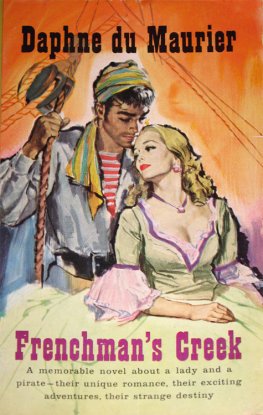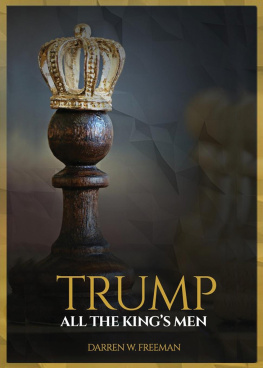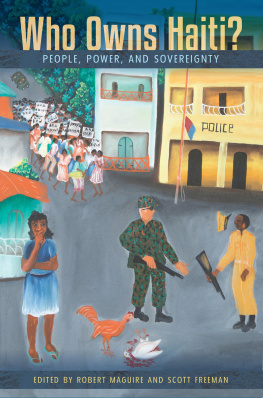
SAVING TARBOO CREEK

One Familys Quest to Heal the Land

scott freeman
Illustrations by susan leopold freeman
Timber Press Portland, Oregon
Men nowhere, east or west, live yet
a natural life, round which the vine clings,
and which the elm willingly shadows.
Henry David Thoreau
A Week on the Concord and Merrimack Rivers
(emphasis original)

Contents
Introduction:
Noticing Things
Dedication
My father-in-law, Carl Leopold, was born on December 19, 1919. Less than two weeks before his twenty-second birthday, the Imperial Japanese Navy attacked Pearl Harbor. His life, and the lives of millions of other American men and women in their late teens and twenties, changed that day. The United States declared war on Japan on December 8, 1941, and on the Axis powers led by Germany on December 11.
On Christmas Day 1941, the free world essentially consisted of Australia, Canada, Great Britain, New Zealand, and the United States. The government of every other country was a dictatorship or fascist, with the exception of Sweden and Switzerland, which remained neutral in the war against totalitarianism. The Battle of Britain had been won, but everywhere elsein Eastern Europe and Russia, Africa, East Asia, Southeast Asia, and the Pacific
the armies of tyranny were advancing.
Imagine that you were a high school or college student on that morning. If you were living in Europe or Asia, you were under occupation. If you resisted that occupation or happened to be Jewish, Romani, a Freemason, or homosexual, you were almost certain to be killed.
What if you were living in what was left of the free world? My father-in-law and his brothers and sisters celebrated Christmas that year in the living room of their home in Madison, Wisconsin. Life there was quiet, but there was also disquiet: the rest of the world was in flames. The young were realizing that they had to fight a warone that the democracies were losing badlybefore they had any hope of finishing school, starting a family, and getting a career under way. They were being called upon to save the world.
My father-in-law enlisted in the U.S. Marines and spent four years in the Pacific as a captain in the artillery. He survived, went back to school in 1945, and had a long, distinguished career as a research scientist. But two-thirds of the young men in his officer training class were killed in action. This book is dedicated to them, and to him.
Today, seventy-five years after the Second World War became a global conflagration, high school and college students are again being called on to save the world. This book is dedicated to them, too.

Introduction
Noticing Things
My uncle Carl Holtz farmed in southeast Wisconsin for forty years. But before he started farming, he went to the University of Wisconsin to row on the crew team. While he was a student there he took a course on wildlife biologythen called game managementfrom a professor named Aldo Leopold.
During the semester, each student was required to have a brief one-on-one conversation about the course with Leopold in his office. More than twenty-five years later, my uncle told me about that meeting: I sat there like the dumb jock I was back then, you know. Professor Leopold was asking me about this and that, and I had absolutely no idea what he was driving at. But then something caught his eye out the window, behind his desk. He looked at it for a moment, then turned to me and asked, Carl, what bird is that?
I had no clue, of course, he laughed. But years later I realized it was a palm warbler, migrating through.
My uncle was a big man, with hands the size of salad plates. He held them up. Leopold knew I wasnt going to go on to graduate school or become a wildlife biologist. He just wanted me to look up and notice things. Uncle Carl put his hands down and nodded at me. And so I haveever since.
Outside my window in Seattle right now, a flock of bushtits is feeding in the bare branches of a birch tree. Some are upside down; some are right-side up. They are flitting, fluttering, jumping. Then they disappear all at oncediving into the cover of a nearby Douglas-fir tree. Now theyre back. A moment later, theyre goneuntil tomorrow.
These birds are adults and juveniles. They are neighbors from the previous year and new immigrants to the neighborhood, and by now are well acquainted. The members of a winter flock like this one find each other in late summer and stay together until the following breeding season. Although bushtits dominate this particular group, there are also some golden-crowned kinglets and at least one chestnut-backed chickadee. Around here, its common to find northern juncos, black-capped chickadees, and hairy woodpeckers in the mix, and sometimes even ruby-crowned kinglets.
You can find these types of mixed flocks almost anywhere you go in the world. In Japan, there would be marsh tits and great tits and goldcrestsclose relatives and look-alikes of North Americas chickadees and kinglets. The Eurasian treecreeper and Eurasian nuthatch would take the place of our brown creeper and red-breasted nuthatch; Japanese pygmy and great-spotted woodpeckers would stand in for our downy and hairy woodpeckers.
In the lowland rainforests of southern Ecuador, all Hades breaks loose. There may be twenty-five species and forty or more individuals in a mixed foraging flock like this. In addition to woodpeckers and woodcreepers, there will be several types of antwrens, a handful of flycatcher species, and a bouquet of tanagers: yellow-throated, blue-winged, orange-eared, blue-browed, and bay-headed, among others. The colors streak from branch to branch. They are dazzling, brilliant, sublime.
Typically, each species in a mixed flock will be eating something slightly different, in a different part of the vegetation. Out my window, the bushtits glean from the tiniest twigs; chickadees pick at branches; brown creepers probe the trunks furrowed bark; hairy woodpeckers rap at spongy, rotting spots in the wood.
When these little gangs appear, moving slowly but steadily through the trees, the woods look like Central Park on a summer Sunday. Youll find every size, shape, color, and linguistic group imaginable among birdsall moving and jostling, going about their day.
For a mixed flock like this, there is knowledge in numbers. Large flocks can draw on the collective wisdom of fifteen or twenty memories, finding food in obscure locations when ice and snow coat the branches and ground.
There is safety in numbers, too. If a sharp-shinned hawk dove into this birch tree and surprised the group, the little birds would scatter like shotmaking it hard for the predator to draw a bead and snatch one from the air. And to avoid surprise, many eyes are better than two. In black-capped chickadee flocks, individuals that notice flying predators give a high-pitched seet call; in response, the others dive for cover. But if the predator is sitting, the spotter gives the chick-a-dee call and adds dees to indicate the degree of danger. Biologist Chris Templeton and co-workers figured this out by bringing live predators into a large outdoor aviary where a chickadee flock was living. Chickadees are littlealmost as tiny as bushtitsand it is the small, agile killers like saw-whet owls and northern pygmy owls that worry them the most. In the experiments, small predators could elicit a string of five dees or more. But big, lunking hunters like great gray owls, which strike fear in the hearts of snowshoe rabbits and grouse, got only a dee or twobarely more than the response to a harmless, seed-eating bobwhite quail. Follow-up work by other biologists showed that Carolina chickadees do the same thing.
Next page















